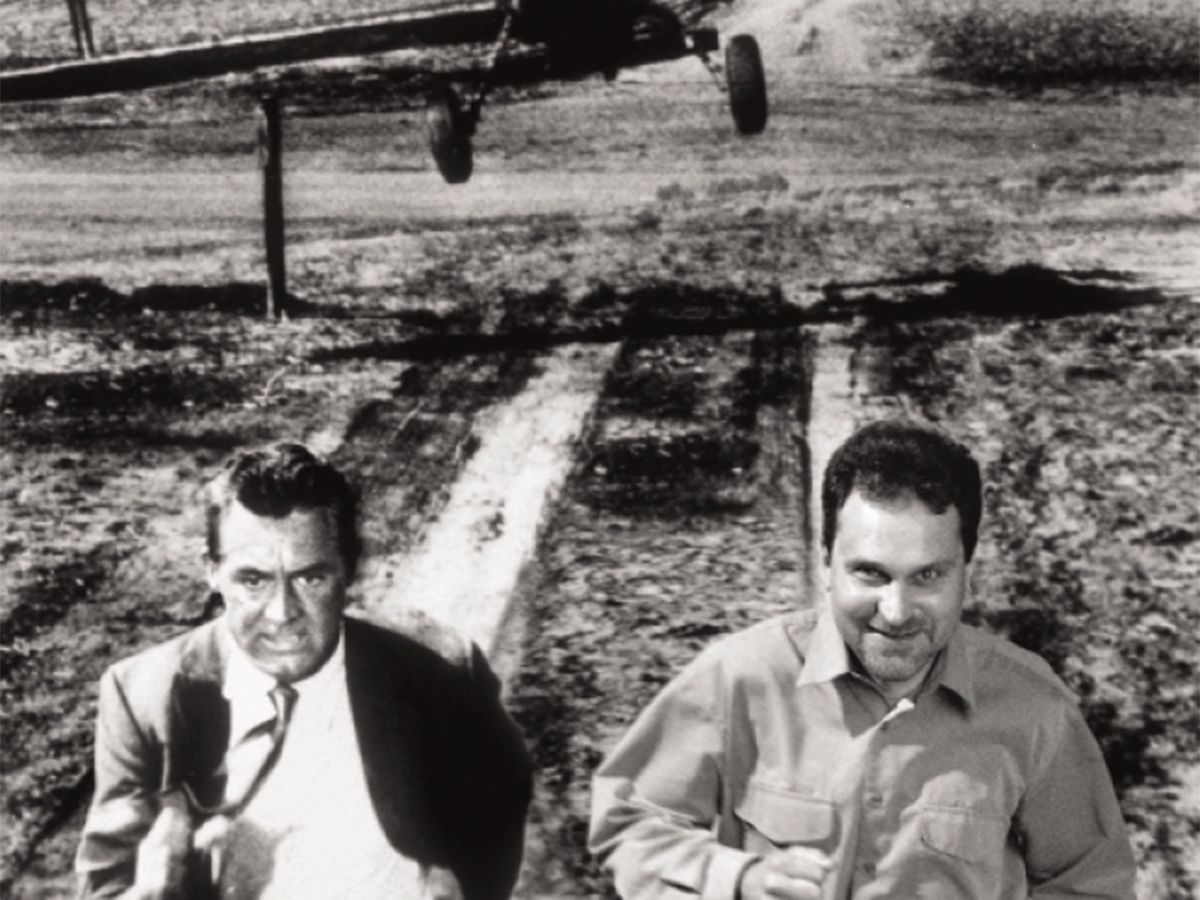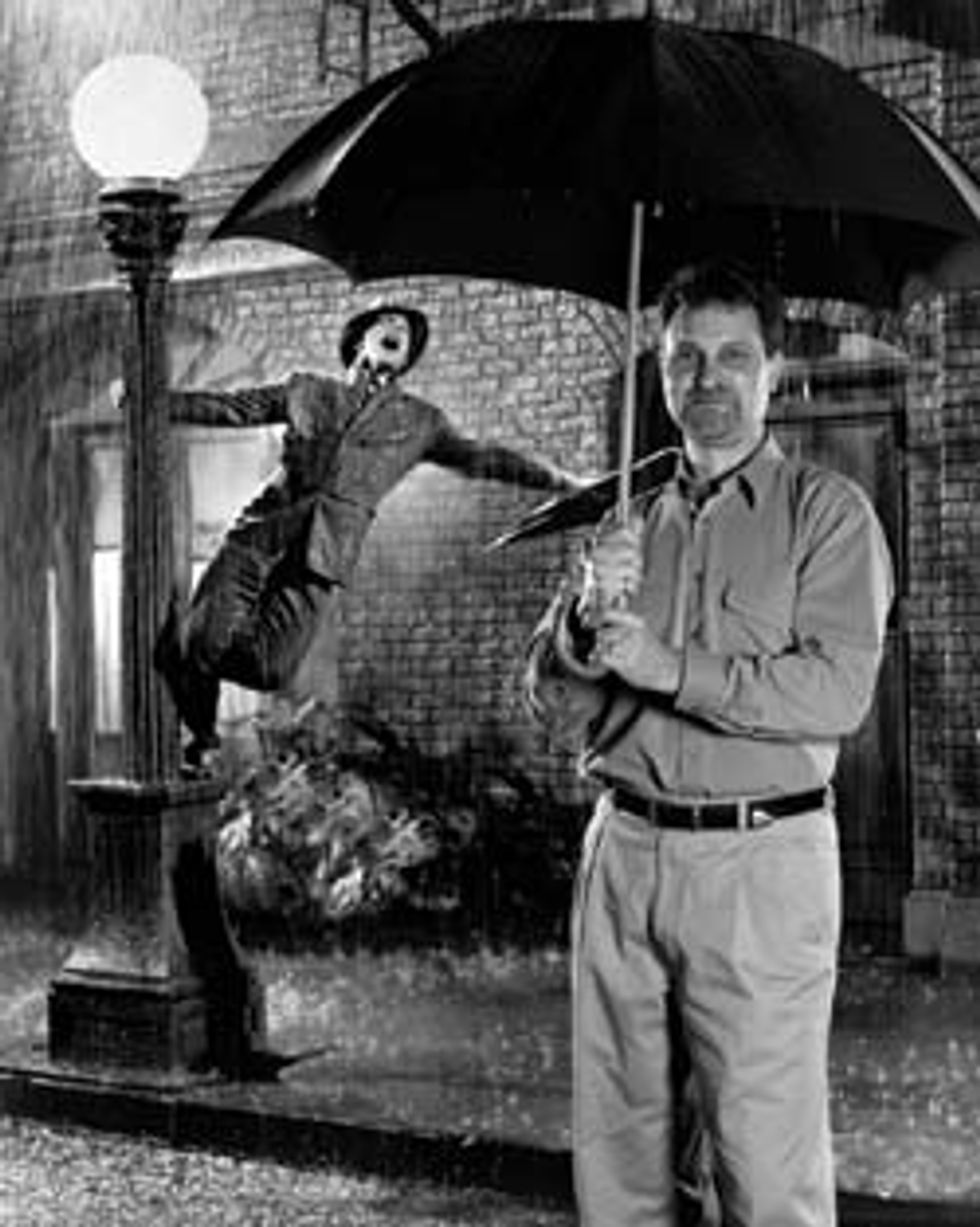Ian Cavén: He Had to Be In Pictures
Restoring old movies for porting to DVDs and for showing in theaters is not the kind of work you would think could be done by one man working in his basement

Ian Cavén works at home, and that’s just the way he likes it. He doesn’t visit customers; he doesn’t go to conferences. Most of the time it’s just him, his two cats, and four Macintosh G4s in his Burnaby, B.C., Canada, basement. Cavén communicates via DSL across the Canada-U.S. border to the 80-plus people at Lowry Digital Images Inc.’s headquarters in Burbank, Calif.
Cavén is chief scientist for Lowry Digital, which restores movies for porting to DVD and makes new, high-quality prints for showing at theaters. The company is a pioneer in this emerging field, and each movie presents new challenges, so Cavén’s research is at the cutting edge of image processing. Among the questions he has examined are: can a computer distinguish between dust on a negative and the image itself? Might a DVD of Star Wars (1977) have higher-quality images than the original movie print? Can mold damage to the best surviving print of Giant (1956) be identified automatically and eliminated?
“I think I am one of the few people in the world today who performs a real research function alone at home,” he says. But thanks to broadband communications, he adds, “Our numbers are growing.”
Working with landmark movies can be thrilling in its own right. Cavén recalls that when he was finally able to remove the flicker from a segment of the classic screwball comedy Bringing Up Baby (1938), he realized that he may have been the first person ever to see that movie flicker-free. But for Cavén the joy of the job is more about the technical challenges than it is about the glamour of the movie industry.
As a teenager Cavén was an avid reader of science and technology magazines. At age 16 he read a popular article on the RSA algorithm for cryptography and wrote to the authors to ask for a more technical paper. When he got it, he found that the math was far beyond him. So he read up on number theory and computers, and he began writing software that could multiply large numbers, running it on an IBM 5100 owned by the father of a friend.
Cavén would eventually implement that RSA algorithm for his undergraduate thesis in the University of Toronto’s electrical engineering program. After college he worked for a company developing a laptop computer, and then in 1987 for Discis Knowledge Research Inc., a Toronto company designing interactive storybooks for the fledgling CD-ROM market. He got that job thanks to his brother’s friendship with the son of the founder, John Lowry, a serial entrepreneur with lots of ideas but no traditional technical training.
During the first couple of years, the company didn’t have offices; Cavén worked alone at home. When the company grew and he was expected to appear in the corporate workplace, he went reluctantly.
Discis was successful during the early years of CD-ROMs, but when the installed base of CD-ROM drives reached some five million, the market changed; behemoths such as Walt Disney Co. stepped in, and Discis was squeezed out. Cavén wasn’t heartbroken. Instead, it seemed like a good time to take a break. In his work at Discis, Cavén found that he needed to know more and more about audio processing and video compression. It was time to go back to school. This time, Cavén applied to the master’s degree program in EE at the University of British Columbia, in Vancouver.
As his thesis topic, Cavén chose motion estimation, a key technology in video compression. Motion estimation allows for the recording of only the differences between frames, instead of all the information in each frame.
Ian Cavén
IEEE member
Age: 43
What He Does: Research and development in imageprocessing techniques for the movie industry
For Whom: Lowry Digital Images Inc.
Where He Does It: In the basement of his home in Burnaby, B.C., Canada
Fun Factors: Tackles unique problems with complete technical freedom; the results of his work are widely appreciated even if his name isn’t known; has no commute
Meanwhile, his former employer, Lowry, had a contract from Eastman Kodak Co., Rochester, N.Y., to do a proof-of-concept of a system that would use digital processing to improve the quality of movie images and then write the higher-quality images back to film.
“This was exactly in line with what I had worked on in school,” he said, since digitally analyzing the images had to start with motion estimation.
In 1998 Cavén began working at home on the Kodak project, sending code to Lowry for testing on images. Kodak decided not to pursue the technology, so Lowry went on to market it to the motion picture industry as a way to improve images on DVD. In 2000 Warner Bros. Studios Inc. gave Lowry Digital a contract for three movies—North by Northwest (1959), Gone With the Wind (1939), and Now, Voyager (1942). Since then, Lowry Digital has grown to 85 employees and worked on dozens of movies.
Down in Southern California, Lowry Digital’s offices are lined with posters from the classic and contemporary movies the company has restored, and company founder Lowry regularly meets with such industry luminaries as George Lucas and Roy Disney. Cavén, alone in Canada, doesn’t miss those thrills; for him, each new assignment is exciting because it brings a new technical challenge.
Flicker, for example, is a problem that afflicts many old movies. It is caused by irregular damage as the film degrades over time, particularly if the film has been stored badly. Cavén used the movie Bringing Up Baby to research flicker removal. The resulting software filter looks for changes in brightness across the height or width of an image that are inconsistent from frame to frame. The basic function is so useful that Lowry Digital has applied it to nearly every job since.

“The movie Giant had mold damage in the top surface of the film, affecting the blue layer,” Cavén recalls. “It made a visible yellow pattern on the screen. You couldn’t remove it manually; it would be far too labor intensive.” Developing software to detect and remove that mold damage automatically took about a week.
To understand how it worked, consider that a digitized movie frame is made up of red, green, and blue dots. On the Giant film, the blue dots were the ones affected by mold, so Cavén’s software ignored those and used the red and green dots to determine which parts of the image were unchanged from frame to frame. Because the mold damage is inconsistent, the software attributed changes in the blue dots over those consistent images to mold and corrected them. Mold damage has not afflicted any other movies that the company has been commissioned to work on, but the tool remains available in the system should the occasion arise.
One recent research project for Cavén involved a movie by director James Cameron, Aliens of the Deep, which was to be released in January. Because the stereoscopic movie was filmed underwater using four two-man submersibles and a small inflatable boat, it would have been almost impossible to use the standard huge and heavy underwater Imax 70-millimeter film cameras. They would have had to be reloaded after only a few minutes of shooting, which would have been quite a chore because the cameras were mounted in a protective enclosure that cannot be opened underwater. And the weight of the cameras in relation to the puny inflatable boat also invited disaster. Instead, Cameron’s crew filmed with much smaller digital video cameras that allowed several hours of shooting.
“There have been a number of problems with that,” Cavén said during production. For one, the cable that carried the bits from the camera to the recorder inside the submersibles couldn’t be well shielded in every location, so some segments of the video were plagued by interference; Cavén developed software to remove the interference pattern. The resulting video was then processed with the company’s standard software to increase its resolution beyond the 1080 lines recorded from the video camera to some 2180 lines before it was transferred to Imax film.
It is the use of untried and therefore risky techniques that makes the work fun for him, Cavén says. His colleagues in Burbank do the routine work; they send the unsolvable questions to him. He works 60 to 70 hours a week, reads stacks of IEEE journals, and usually makes time for lunch and dinner with his wife and 1-year-old son.
Cavén hasn’t been to a conference in some seven years, but he does visit the Burbank offices several times a year to watch his tools in use. He is paid a moderate salary; money, he says, is not the primary motivator, though he thinks there is a good chance that someday his ownership stake in the company will have cash value and he’ll more than catch up to what he might have made at a traditional job.
To Probe Further
You can read more about Ian Cavén’s work, the technical achievements of Lowry Digital, and the company’s extensive use of Macintosh computers at https://www.apple.com/pro/film/lowry/and https://www.apple.com/pro/film/lowry/index2.html. The company itself does not maintain a Web site.